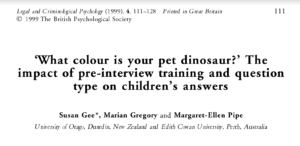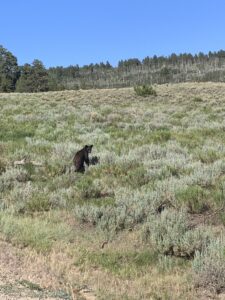Hi again! This week, I have been exploring the CALiO database tons as I continue to learn about forensic interviewing through the online course. I’m hoping to finish the course within the next week or so.
My endeavors on CALiO have proven to be incredibly interesting and informative. I have read a lot about how the different phases of each interview play into each other and differ in results from child to child. Each forensic interview is comprised of 3 phases: the ground rules, a practice narrative, and the substantive phase. The practice narrative has proven to be a crucial step in interviewing children, as it allows the interviewer to gain rapport with the interviewee as well as demonstrate what an ideal disclosure would look like, which is different for each child.
During this phase, the child is asked to describe a recent event unrelated to the case at hand, such as their last birthday party or last soccer game. The interviewer then asks open-ended questions that allow the child to provide many details and elaborate a lot about the event. This establishes a good relationship between them, providing a good basis leading into the substantive phase. The substantive phase addresses the alleged abuse or violence using the same types of questions that were used in the practice narrative.
One of the most interesting studies I read about on CALiO this week was titled “Investigative Interviewing of Aboriginal Children in Cases of Suspected Sexual Assault.” There is not a whole lot of research in these interviewing methods in other cultures, so it was very eye-opening to see the differences that emerge between children of different backgrounds in similar situations.
Outside of my internship, I went camping with my family and friends. On the way up to the camping site, we saw a baby bear, which was pretty cute but also mildly terrifying. I slept next to the bear spray, but luckily didn’t have to use it.



There are no comments published yet.